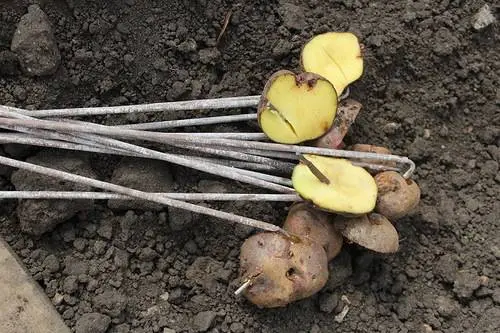Contents
The wireworm is one of the most insidious pests affecting potato tubers. Until recently, little has been said about the fight against wireworms, paying special attention to such an enemy of potatoes as the Colorado potato beetle. This has led to the fact that the biology of the wireworm has been studied very superficially, and, therefore, the means of combating it are ineffective. At the same time, the harm from the wireworm on potatoes can, if not exceed, then certainly equal the harm from the Colorado potato beetle, and underground life makes its detection very problematic. But despite this, the fight against it must be carried out. Below we will talk about wireworm on potatoes and how to prevent its appearance.
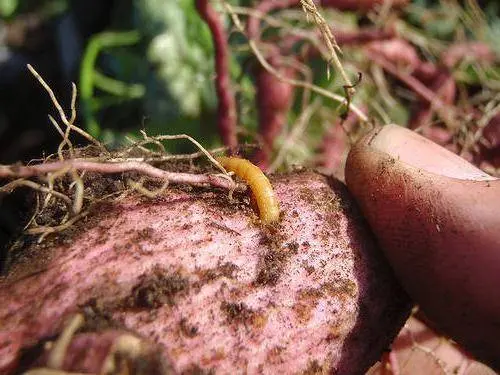
Who is a wireworm, and what harm can it bring
At its core, a wireworm is not even an adult, but just a larva of a click beetle. The click beetle is a harmless insect that feeds on the leaves of cereal plants and does little harm. Its dimensions are insignificant – the maximum length of its oblong body will be about 2 cm. The color of an adult beetle can be dark brown, brown or deep purple. You can notice them in your garden or vegetable garden from early spring to mid-August.
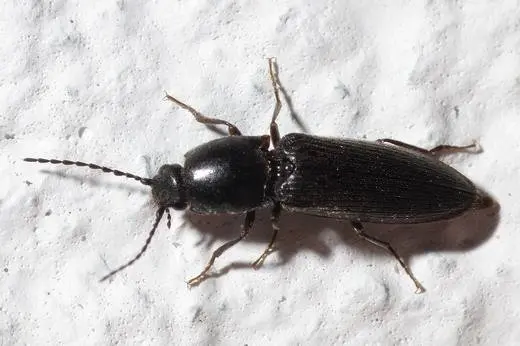
During this time, the female click beetle lays about 200 eggs, from which subsequently the wireworm larvae, also called wireworms, appear. They got their name due to the hard, shiny body that looks like a wire.
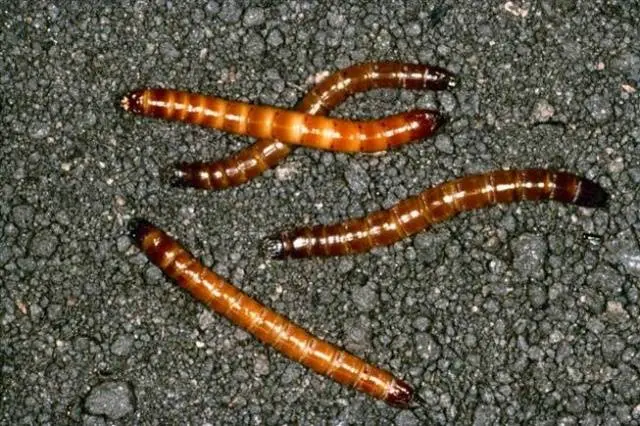
Unlike their parents, these voracious wireworm larvae can cause tremendous damage to the garden. Before turning into a click beetle, wireworms live in the ground for 5 years, making deep ornate passages in it and devouring everything in their path.
In the first year of their life, the larvae are almost harmless. They are very small, so they don’t need a lot of food. But from 2 to 4 years of life, wireworms become a real threat, especially for potatoes. By this time, they already grow to an average of 2 – 3 cm in length and become like small worms with well-segmented bodies. Along with the length of their body, their color also changes: from light yellow to brown. Moreover, the older the wireworm larva, the harder its body. It will be quite difficult to crush it.

Wireworms are extremely voracious and omnivorous. For them it is absolutely not important what to eat, the main thing is to eat. Most often they attack potatoes, but other crops may not be overlooked, such as:
- carrot;
- tomatoes;
- cabbage;
- beet;
- rye and others.
They feed on absolutely everything, from a planted seed or tuber to roots, shoots and even stems. Their life motto – there is everything that can be reached. As a result of such vigorous activity of the voracious larvae of the click beetle, the gardener can lose from 65% to 80% of the crop annually. These larvae overwinter well in the soil, and with the advent of spring they take on young plants with renewed vigor.
Signs of the presence of a wireworm on potato beds
Potatoes for wireworm larvae are a favorite delicacy. They especially value potato tubers themselves, but do not disdain roots and tops. It is quite difficult to notice the wireworm on potato crops, but there are still several signs that indicate its presence:
- Detection of single wilted potato bushes. The fact is that in the ground they move mainly vertically, deepening into the soil by 1 – 2 meters. At the same time, they do not move further than 20 cm from the place of their feeding with potato tubers. This feature of this pest allows it to eat only individual potato plants.
- You can find wireworm larvae when digging potatoes early. Young potato tubers will have through narrow holes and dark depressions in the skin through which the faces move.

- You can also notice wireworm larvae when digging or loosening a potato bed. In summer, the wireworm moves in the upper layers of the soil at a depth of 5 to 10 cm.
Important! When a wireworm is found on a potato, it can easily be confused with a useful ground beetle. A distinctive feature of the wireworm is the characteristic click emitted by the pest when turning over.
Measures for preventive control of wireworm
As with other pests, avoiding the appearance of wireworm larvae on potatoes is much easier than fighting it.
Preventive control of wireworm larvae on potatoes includes a number of agrotechnical measures that contribute to the improvement of the entire area:
- Organization of crop rotation. Many gardeners mistakenly avoid crop rotation in their garden, considering it a waste of time and effort. In fact, crop rotation is very important both from the point of view of preventive control of diseases and pests, and from the point of view of improving the quality and quantity of the crop. You can learn more about the rules of crop rotation from the video:Crop rotation of vegetable crops

- Cleaning of all root crops. During the autumn harvest, it is very important to collect all the tubers of potatoes or other plants. In this case, the wireworm will be provided with a hungry winter, which not all individuals will be able to survive.
- Maintaining the soil on the site at a neutral level of acidity. The wireworm loves the high acidity of the soil, so reducing its level will not do him any good. Indicator plants will help determine the acidity of the soil. If horsetail, plantain or sorrel actively grow on the site, then the soil has a very high acidity and must be limed.
- Attraction to the site of birds and insects that eat the click beetle and its larvae. These birds include starlings, wagtails, thrushes, rooks and turtledoves, among insects, garden beetles love to feast on the click beetle and its offspring. A birdhouse will help to attract birds, but for ground beetles you need to create a shelter from small stones, sawdust or tree bark.

- Destruction of weeds. This is especially true of burdock and couch grass – they are practically “ready-made houses” for wireworm larvae.
In addition to these preventive control measures, there are some crops, the planting of which repels wireworm larvae from potatoes:
- Dahlias – the wireworm cannot stand their smell, so it will not stick itself into a potato bed surrounded by these beautiful flowers.
- Siderates – when rotting, they release essential oils that will scare away the wireworm. Of all green manure plants, the wireworm does not particularly like mustard, rapeseed, buckwheat, colza and sweet clover. They should be planted on a potato bed in the fall, after harvesting or in the spring before planting. When the plants grow to a height of 10 cm, they must be mowed and embedded in the soil.
- Legumes – in addition to scaring off the wireworm, peas, beans and beans will enrich the soil with nitrogen, which is necessary for potatoes.
Wireworm control methods
You can fight wire worms on potatoes with folk remedies and chemicals. Of course, any chemistry will accumulate in potato tubers, so it would be preferable to use biologically based preparations or folk recipes.
Folk recipes in the fight against wireworm
There is nothing safer for a person than processing potatoes before planting from a wireworm using folk recipes. In the fight against wireworms on potatoes, the following folk remedies and recipes are successfully used:
- Eggshell is perhaps the cheapest and most versatile remedy of all means of dealing with wireworm on potatoes. Wireworms just can’t stand it. Shredded eggshells can be used to process potato tubers before planting, they can be put in a hole when planting potatoes, or laid out around the perimeter of a potato bed.
 Egg shells from wireworm larvae on potatoes can be replaced with onion or garlic husks.
Egg shells from wireworm larvae on potatoes can be replaced with onion or garlic husks. - Infusions of dandelion or nettle. To combat wireworm on potatoes, stir 10 grams of nettle tincture or 500 grams of dandelion tincture in 200 liters. The resulting infusion should be processed wells before planting potatoes. Moreover, such processing is carried out a week before planting potatoes every 2 days.
- Ammonium nitrate or ammonium sulfate. Both of these preparations are excellent for fighting wireworms due to the ammonia contained in their composition, which causes the larvae to migrate deeper into the ground, where they remain without food. For 1 square meter it is necessary to make from 20 to 30 grams.
- A solution of potassium permanganate is very effective in the fight against wireworm larvae. They can shed holes before planting potatoes and process already grown bushes. As a rule, no more than 10-2 grams are taken per 4 liters of water.
With the help of folk remedies, you can not only fight the wireworm on potatoes, but also catch it. This is one of the few pests that perfectly fall into all sorts of traps. In the fight against wireworm larvae on potatoes, the gardener can use the following baits:
- Old spoiled potatoes – to prepare a trap, old potato tubers must be soaked for a day in any insecticide and buried in different places in the garden. In order to then seamlessly find all the potato traps, the place of instillation must be marked with something. After 2 days, potatoes with larvae inside must be dug up and burned.

- Pieces of potatoes or carrots – they must be put in a glass jar with a volume of 0,5 liters and buried in the ground up to the neck. Not only wireworm larvae, but also adult click beetles will come to such a treat. In order to get out of there, they could no longer, the neck must be covered with paper.
- Seedlings of corn, barley, wheat or oats – in order to catch wireworms, a small amount of these crops must be planted on them 2 weeks before planting potatoes. Before planting potatoes, these plants are dug up along with the wireworm and burned. For greater efficiency, the seeds can be treated with an insecticide before planting.
Chemicals in the fight against wireworm
Chemical preparations can only be used when planting potatoes with mid-ripening and late ripening. Early varieties of potatoes will not have time to remove all the chemistry from their tubers, and the gardener will get it.

Most often, the following drugs are used to combat wireworm larvae on potatoes:
- Prestige;
- Finding;
- Cruiser;
- Imidor;
- Commander
In addition to these drugs, a home-made composition helps in the fight against wireworm on potatoes. To prepare it, you need to take 5 kg of superphosphate in granules and sprinkle it with a thin layer on the film. After that, you need to prepare a solution for its processing. To do this, you can take Decis at a dosage of 0,4 ml, Karate – 1 ml, Aktellik – 15 ml or Fastak – 2 ml. The drug selected from this list is added to a water-acetone solution prepared from 200 ml of acetone and 800 ml of water. The resulting solution should be sprayed with superphosphate decomposed on the film. After it dries, it should be scattered on potato beds. This amount is enough for 100 square meters.
Conclusion
In order for the fight against wireworm on potatoes to be successful, a systematic and integrated approach is needed. You can’t just scatter eggshells everywhere or pickle potatoes with chemicals. Any control of pests such as wireworm must begin with the care of the site and keeping it clean.










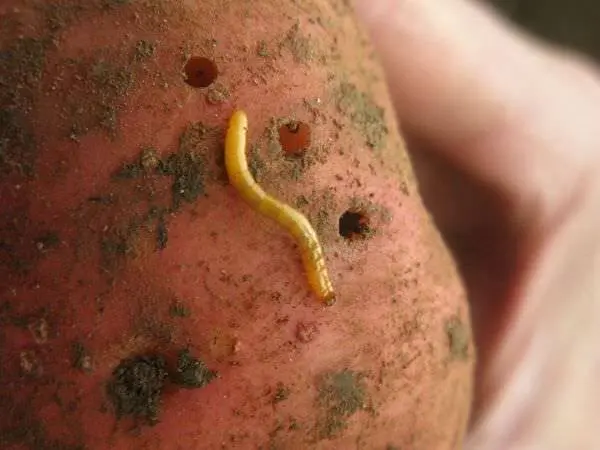

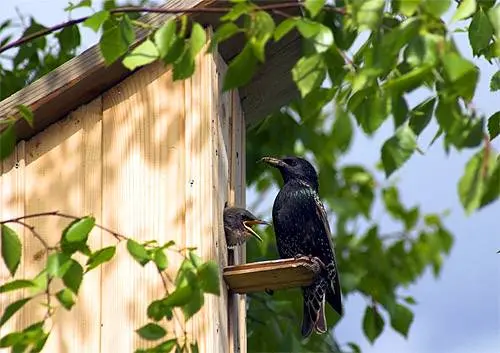
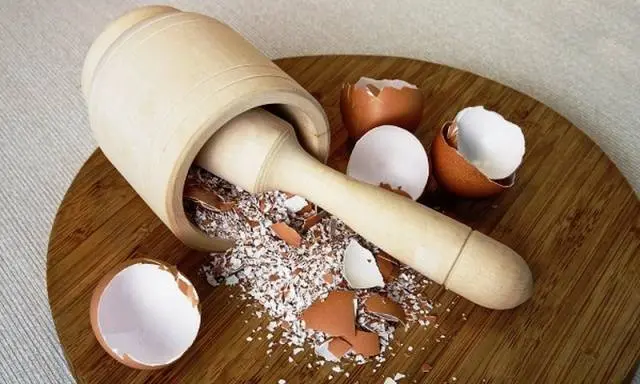 Egg shells from wireworm larvae on potatoes can be replaced with onion or garlic husks.
Egg shells from wireworm larvae on potatoes can be replaced with onion or garlic husks.